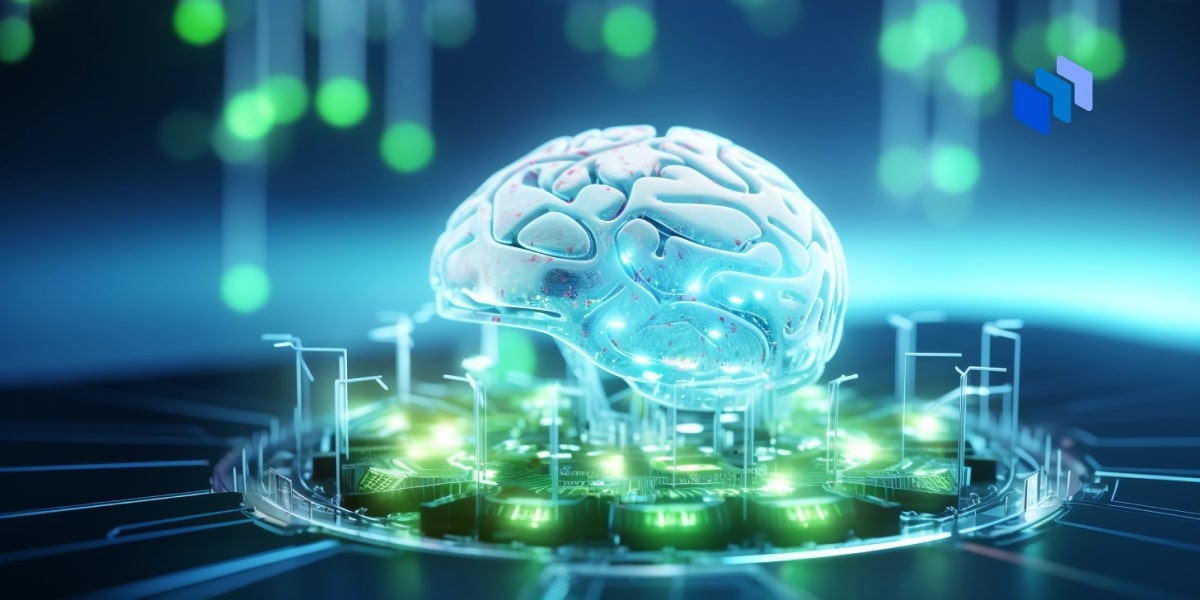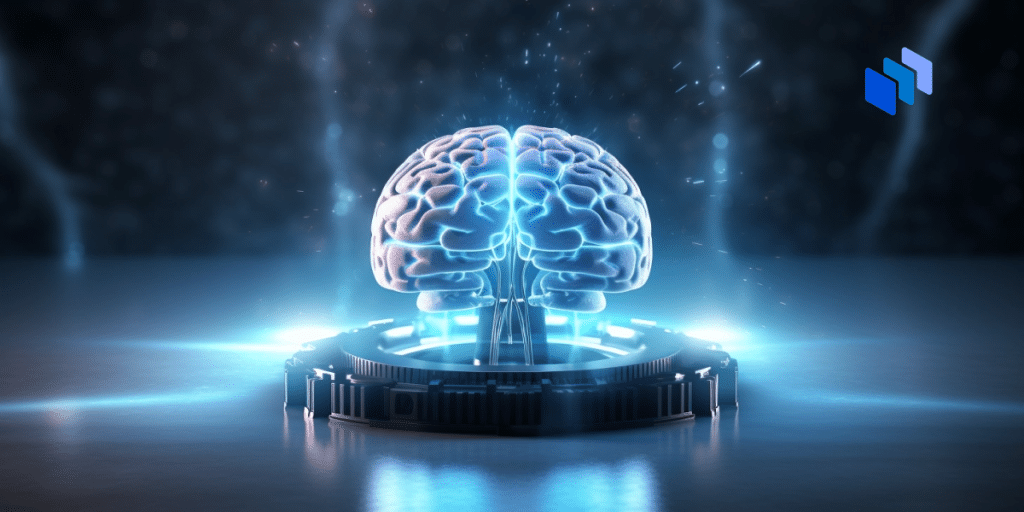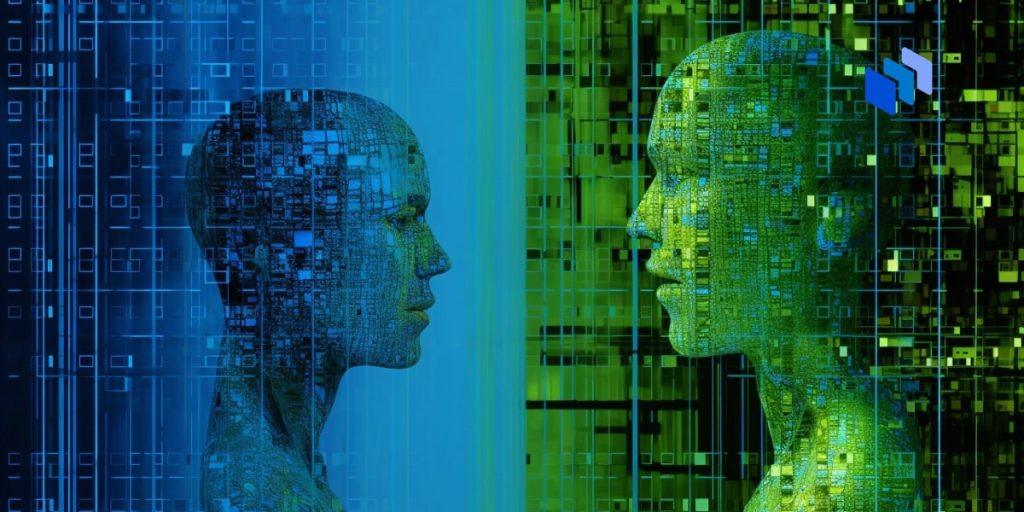2023 has been a massive year for the development of large language models (LLMs). Over the span of several months, we’ve seen the release of GPT4, ChatGPT Enterprise, Google Bard, Microsoft Bing Chat, and Meta’s LLama 2.
But what will AI do in the future?
Techopedia’s predictions for AI in 2024 and beyond suggest plenty of developments to come on the road ahead. We asked two of our technology writers, Tim Keary and Neil Hughes, to sit down and talk us through their hopes, dreams, fears, and controversial takes on what the next few years may bring.
Top 8 AI Predictions for 2024 and Beyond
1. Generative AI Hype Will Crash
As users and organizations alike continue to experiment with generative AI, hype around the technology will begin to crash as overexcitement over LLMs and the potential development of artificial general intelligence (AGI) has given way to a more realistic understanding of what chatbots can, and can’t do.
Arguably, this process can already be seen by the fact that the number of visits to the ChatGPT website has fallen for three months in a row. One of ChatGPT’s main competitors, Bard, hasn’t fared much better either, with the verbose chatbot receiving just 13% of ChatGPT’s traffic as of August 2023.
The decline in hype around technology is also being accelerated by growing anti-AI sentiments as workers and other stakeholders in society are becoming increasingly vocal about the adverse impact of automation and other ethical concerns.
For instance, not only have Hollywood writers and the Writers Guild of America (WGA) successfully protested to implement restrictions on AI’s use in the filmmaking industry, but vendors like OpenAI have been hit with a number of lawsuits over allegedly using copyrighted material and intellectual property to train AI models.
– Tim
2. Digital IDs, AI, and CBDCs: The Inevitable Collision Course of Two Tech Trends
I recently spent time in Estonia and was blown away by how 99% of its public services are available online. The country offers its citizens and businesses a sweeping array of digital services. This focus on digital governance has streamlined bureaucratic processes, saving the country an estimated 2% of its GDP each year and positioning Estonia as a global thought leader in digital identity and e-governance.
What’s the catch? This digital utopia hinges on a single but crucial point: citizens’ universal adoption of digital IDs. While highly efficient, this ID system also opens the door to potential concerns about privacy and surveillance. It is a foundational element for other digital initiatives, such as Central Bank Digital Currencies (CBDCs) and carbon credit scoring, offering exciting opportunities for financial innovation while also raising ethical questions.
Security experts warn that centralizing such vast amounts of data could provide governments with unprecedented real-time oversight of citizens’ economic activities, posing risks that range from data misuse and financial censorship to targeted punitive actions against dissenting individuals.
Combine that data with the future of AI, where it’s burgeoning powers to quickly parse through datasets and pull out very specific information in natural language. It stops just being a policeman you’re worried about — but an always-on, efficient investigator.
The issue extends beyond the technical to tap into cultural and political spheres. To gain universal acceptance, digital IDs must navigate a complex landscape of cultural attitudes toward privacy and government intervention.
Therefore, the move toward such a comprehensive digital identification system isn’t merely a technological shift but a significant societal transition. It requires a nuanced, multidimensional dialogue that weighs the allure of efficiency and technological innovation against the imperative for individual liberties, ethical considerations, and data security.
– Neil
3. Hackers Will Create Multimodal Jailbreaks
Since the release of ChatGPT in November 2022, AI developers, independent researchers, prompt engineers, and threat actors have all been experimenting with ways to jailbreak large language models.
One of the most notorious examples is the Do Anything Now (DAN) prompt, a technique that enabled users to exploit LLMs like ChatGPT to generate content outside of their content moderation guidelines. This could include everything from discriminatory output to malicious step-by-step instructions on how to commit cybercrime.
Now, as more AI vendors like OpenAI and Google move to embrace multimodal LLMs with GPT4-V and Gemini, we can expect to see users experiment with new techniques to jailbreak these technologies.
As Princeton University researchers pointed out in a study released earlier this year, multimodal LLMs create a present wider attack surface for hackers to exploit (PDF) as users attempt to combine text and image prompts to exploit these technologies. The true risk posed by this exploitation remains to be seen.
– Tim
4. Is 2024 the App Store Moment for Generative AI?
Looking back to last year’s articles, nobody predicted how Generative AI would quickly dominate conversations this year.
Like Tim, I also have mixed feelings about AI and all the buzz it’s getting. It’s hard to get excited about companies like Microsoft building hype around its AI strategy while the apparent junk and scam emails in my Outlook inbox increase. I also have a problem with the somewhat false narrative promoted by big tech that their AI solution is not at the expense of jobs while making mass layoffs to buy more GPUs.
However, I don’t think Gen Gen AI is going anywhere despite my reservations. I see 2024 as the year when businesses start to figure out how to use Gen AI to their advantage, thanks to an increasing number of plugins. The success will be determined by what problems Gen AI solves in business-critical applications.
Think about when mobile apps first came out. At first, they were very gimmicky, like turning your phone into a fake pint of beer, a chainsaw, or playing the Ocarina. But now, apps do so much more. I think AI is headed in that same direction.
If 2023 was Gen AI’s iPhone moment, then 2024 could be its App Store moment.
– Neil
5. The Gap Between Open and Closed Source AI Models Will Close
On a more positive note, open-source AI is well-situated to close the gap with closed-source AI models. This year, we’ve seen powerful open-source models like Llama 2 and Falcon 180B demonstrate that enterprises have a viable alternative to relying on proprietary blackbox models.
While these models aren’t yet at the level of GPT-4, they have performed well against other proprietary models like GPT-3.5 and Bard and, with fine-tuning, remain a highly competitive open-source alternative to the leading closed-source models.
It’s unlikely that open-source models will overtake the computational power and capabilities of proprietary LLMs in 2024. However, with the potential release of powerful multimodal from Google and OpenAI in the form of Gobi and Gemini, open-source AI will undoubtedly become a greater force to be reckoned with
– Tim
In early 2024, we will gradually move towards a cookieless internet. Google has set this stage by phasing out third-party cookies from Chrome.
Beginning with just 1% of its enormous user base, Google plans to make Chrome entirely third-party cookie-free by Q3 of 2024. The company’s alternative, Privacy Sandbox, aims to provide a more privacy-centric way for businesses to target users based on their interests.
Instead of allowing third-party cookies to follow you, websites will interact directly with your browser to determine your interest. While still under scrutiny by regulatory bodies like the UK’s Competitions and Markets Authority, the move signals a significant shift towards a more private and secure browsing experience.
As the deadline for eliminating third-party cookies looms, many marketers will feel underprepared for this seismic shift in digital advertising. While the roadmap for transition may be available, comprising steps like creating specialized MarTech teams and focusing on first- and second-party data — implementing these changes is easier said than done.
The integration of marketing and IT, a weak link in many organizations, suddenly becomes a critical success factor.
However, the changes don’t stop at cookies. We’re also seeing a gradual retirement of traditional password systems, which have long been a weak link in cybersecurity. Google is leading the charge by making biometric passkeys the default login mechanism.
This new approach employs face scans, fingerprints, or PINs to allow access, offering a faster and more secure alternative to the often vulnerable and cumbersome password systems we’ve all grown weary of.
In a nutshell, 2024 could be when we take tangible steps towards a digital world that’s less intrusive and more secure.
– Neil
7. Quantum Computing’s Big European Moment: Promise or Prelude?
In the fast-moving world of tech, quantum computing is like the ultimate prize that’s still out of reach. But news that IBM is opening a special data center in Europe next year for quantum computing will further fuel its hype cycle. It will house powerful IBM quantum computers located in Germany, which can handle complex calculations much faster than regular computers.
The center will act as a hub to make it easier for researchers, businesses, and European governments to experiment with quantum technology.
Although quantum computing has enormous promise, we need to cool our jets of enthusiasm and accept the timeline for fully unlocking its transformative potential remains uncertain, so don’t expect it to change the world just yet.
Combine AI with quantum computing, and 2024 becomes a lot more powerful.
– Neil
8. ESG Credentials vs. Tech Waste
We find ourselves in a paradoxical era. On the one hand, companies boast about their environmental, social, and governance (ESG) credentials; on the other, events like CES 2024 in Las Vegas promote a culture of disposable tech gadgets. With tech consumption soaring by nearly 70% from 2013 to 2020, the environmental toll could be devastating if left unchecked.
As sustainability becomes a key focus for investors, the need for accurate verification methods has never been more pressing. Platforms like SESAMm’s TextReveal® are quickly changing the game by using AI and NLP to identify false eco-friendly claims, known as greenwashing.
These platforms comb through vast amounts of digital content to spot red flags, offering critical insights at an unprecedented speed and scale.
By combining AI with traditional research methods, we might see a more reliable system for identifying greenwashing in 2024. This balanced methodology does more than safeguard investments; it also lends credibility to the sustainability movement, ensuring our actions positively impact the environment.
– Neil
The Bottom Line
AI is taking on existing tech — and tech concerns — and super-charging them. It is both extremely exciting and potentially pretty frightening.
If the industry is in its infancy at the moment, at least the consumer-accessible side of it, it’s likely to start maturing in the coming year and being used for more and more tasks.
As Neil put it, at first, the App Store was originally a bolt-on of childish apps as people got to grips with the power they could unlock.
Now, nearly everything is an app -— and if not, it’s a mobile-first website. Whether you’re comparing cars, booking a hotel, buying a house, sorting your shopping, looking for love online, or planning your daily agenda, apps are everywhere.
Right now, most people’s knowledge or experience of AI is likely ChatGPT, Dall-E, or MidJourney. Probably, you’re the only one in your family who has used them.
Is 2024 the year that AI becomes a service for a much larger section of the population — and benefits increase and fill various niches as a consequence?
Check back with us in a year, and we’ll find out!








